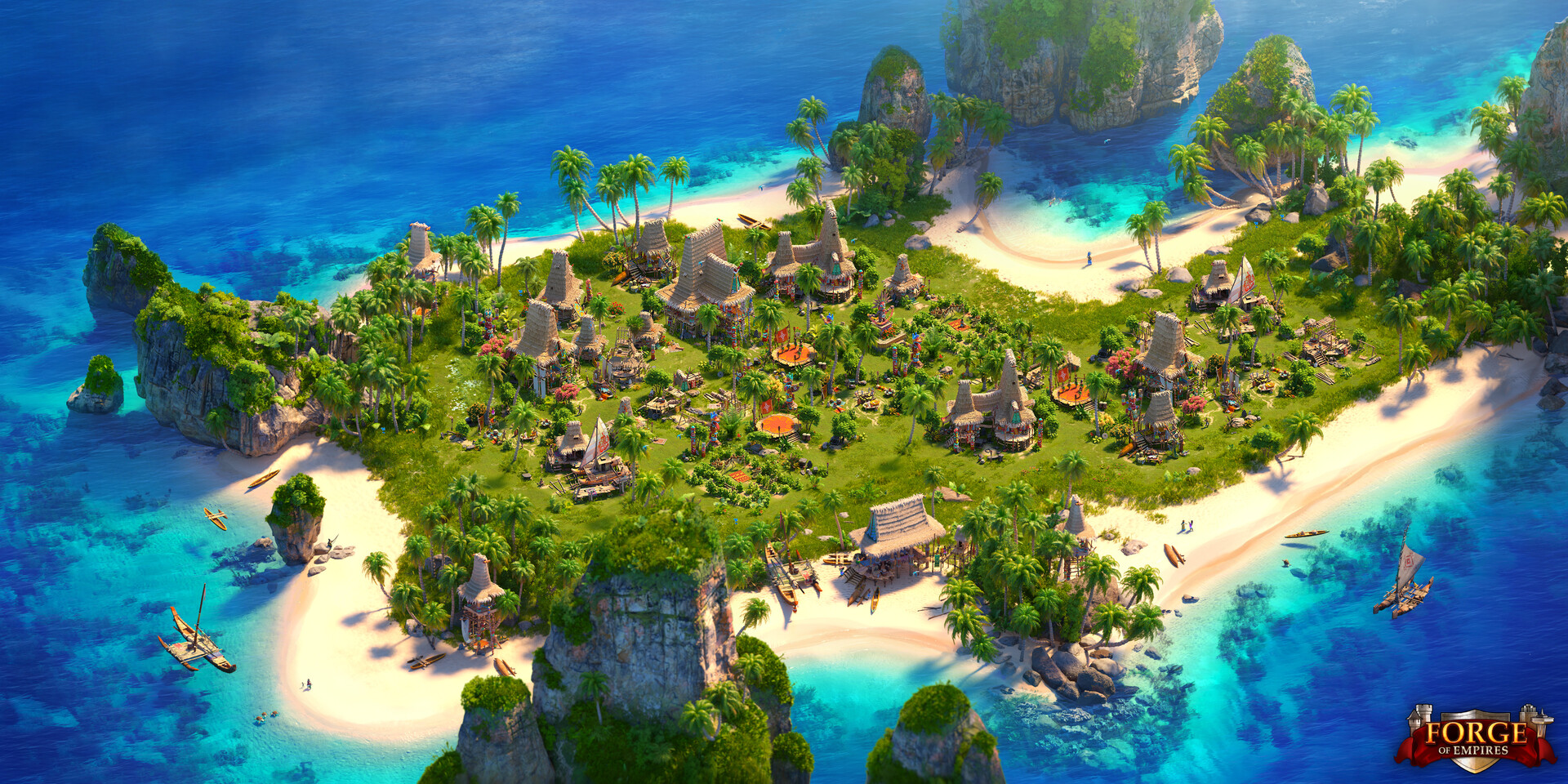Travel brochures appeal with their beautiful pictures of vacation destinations, leaving you with great wanderlust. Being the newest Settlement released after the Mughal Empire in August 2021, Polynesia similarly captures players’ imaginations with its breathtaking, photo-realistic landscape created by our art team.
We’re excited that Vincent, Senior Environment Artist, has joined us to share insights into the art behind the Polynesian Settlement. Working for Forge of Empires for many years now, he made many great distributions to the spectacular art of Forge of Empires. You can find selected works, including the images from this blog article, in a gallery here!
1. To kick things off, could you explain briefly for people who don’t know what Cultural Settlements in Forge of Empires are?
Hello! In Forge of Empires, Settlements offer players a unique glimpse into human history, focusing on diverse aspects of past cultures, tribes, and lost civilizations. They provide an opportunity for players to immerse themselves in the lives, customs, and traditions of these historical periods, far away from your main city. Completing the challenges of the Settlement reward you with a building that you can put in your city like a souvenir from a vacation trip.
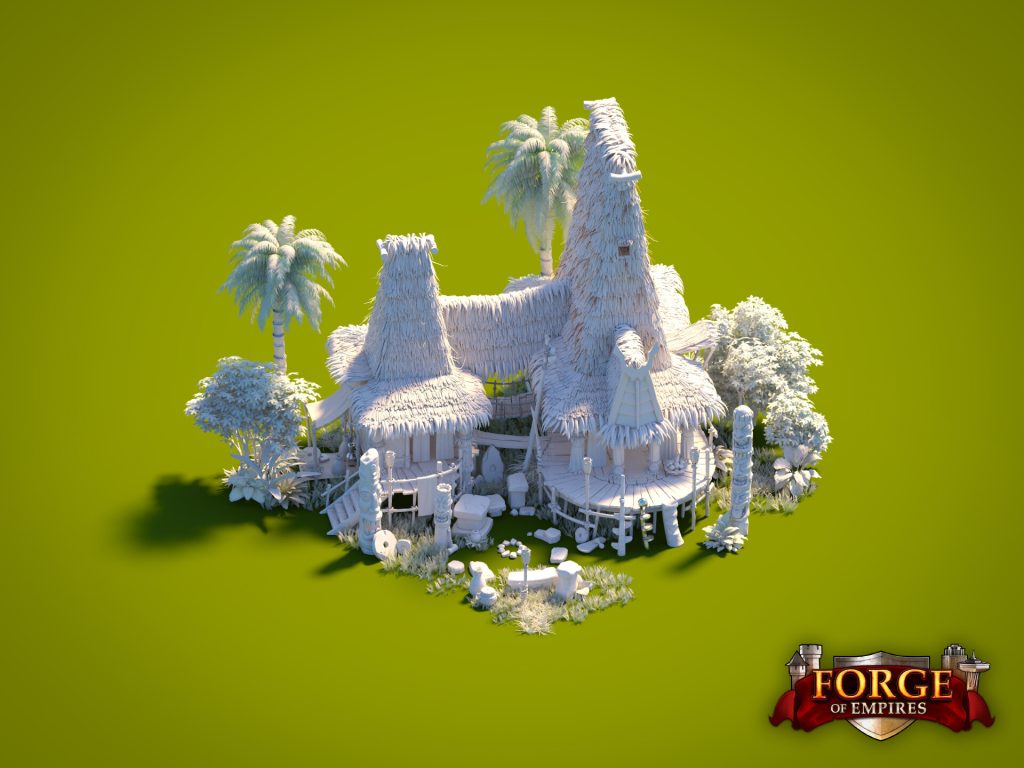
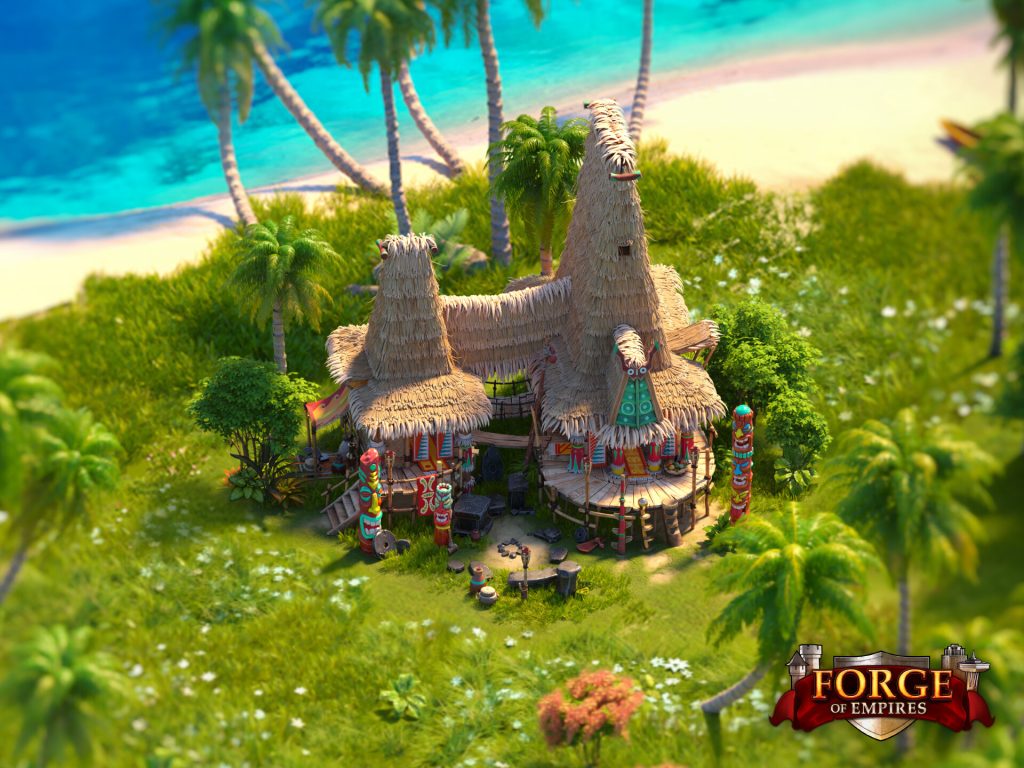
2. We’re curious to learn about the initial steps the art team takes when crafting a new Settlement. What does the beginning of such a process look like and when do you step into work?
Our process begins with a deep dive into numerous ancient cultures and indigenous peoples who continue to maintain their traditional ways of life today. We strive for authenticity, delving into their captivating stories and selecting those that resonate with us or that we envision in the game. It is a bit like the work of an anthropologist, but at the same time so inspiring.
A crucial criteria in our selection process is the architectural style, given our role as city builders.
Additionally, the landscape and nature environment play pivotal roles in our decision-making process. We also assess the technical feasibility of each concept and its historical significance for our players.
During this research process I especially love the part when we look in detail at the Traditional clothes and the jewellery as it is always strongly connected to the natural environment they live in.
Using this wealth of information, we filter our ideas to identify those with the potential to be featured in the game. We always update and revisit this list before starting a new Settlement.
Then, we collaborate closely with our game designers, and integrate their game mechanics into our concepts.
Finally, we democratically determine our next Cultural Settlement through a collective vote.
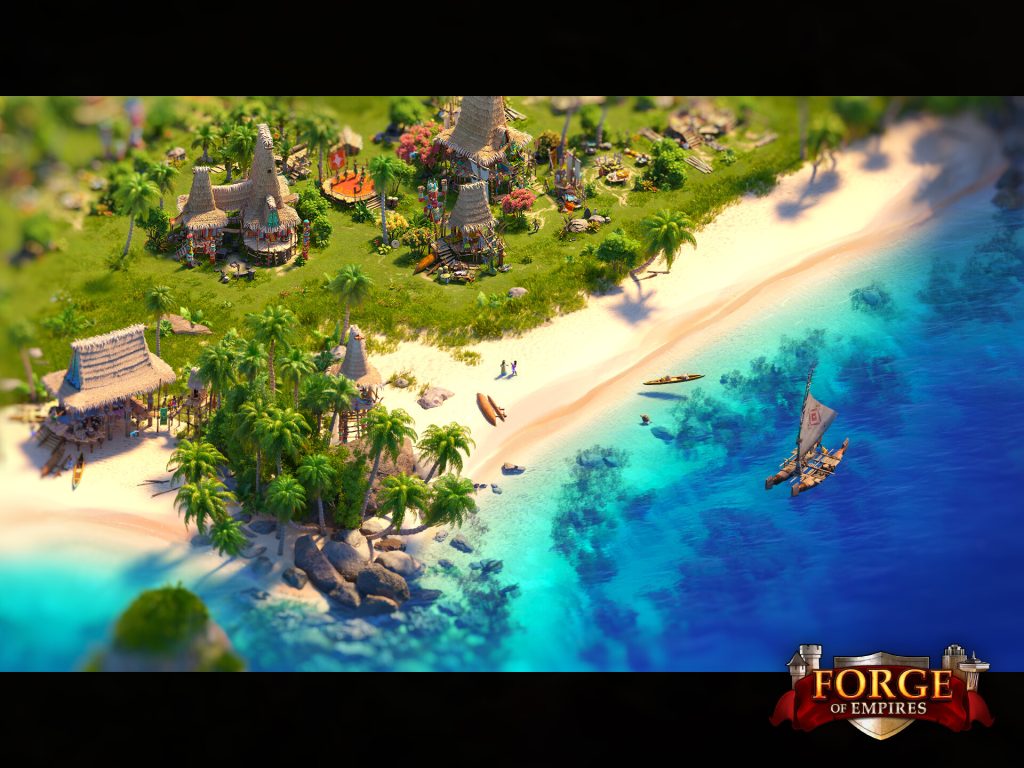
3. The Polynesian Settlement not only offers a feast for the eyes but captures an incredible tropical vibe that makes you pack your bags and book a flight. Could you share what elements contribute to making this depiction of Polynesia so immersive?
When envisioning Polynesia, one is immediately drawn to the image of pristine turquoise waters, vibrant coral reefs beneath the surface, and the golden shores.
Therefore, our initial focus is crafting the lighting and rendering setup, often unseen but a task of paramount importance. After extensive work, this “render scene” sets the stage for everything that follows, as every aspect of the environment relies on this crucial step.
Then comes the fun, setting up this beautiful water shader in accordance with the very Intense lighting of the sun. You can actually notice the strong energy of the light being reflected from the golden beaches. Creating the water effect was quite challenging, particularly to achieve the desired gradient as depth increases. This was especially tricky due to our ISO/perspective camera setup, which can make creating depth perception a bit difficult.
Our process involves numerous iterations, and after multiple tests, we establish a solid foundation to refine our various elements. This ensures they interact harmoniously and bring the whole color palette we are looking for, especially in a super bright environment like this one.
Finally, the sun’s rays penetrate the water, casting precise illumination on the corals in the shallow depths, enhancing their vibrant colors and textures, as well as on the surface with our diverse materials.
With our setup now done, we can introduce a variety of beautiful flowers, typical palm trees of the region and our favourite fluffy green grass, adding to the inviting atmosphere. We spend some more time on researching and designing unique and iconic elements of the actual culture.
Blending these elements, along with traditional dancing animations, create this festive and joyful ambience across the whole settlement.
4. With so many details, you sure spent lots of time in research. What inspired you most about Polynesia when depicting its landscape for the game and how did this inspiration make it into the game?
First and foremost, it’s essential to have a genuine passion for architecture, particularly historical architecture in this context. As of today I am still fond of the architecture style from the Ottoman empire, it is the most beautiful to my eyes.
But let’s go back to Polynesia. While our initial concept drew inspiration from the iconic Polynesia in its pop culture—think turquoise seas and beautiful beaches—we’re not confined to just the Polynesian region. Actually, as we explored so many cultures we found very interesting architecture styles from Indonesia, and the one you are seeing in this outpost is the impressive Sumbanese traditional architecture, with their high-pitched peak silhouette.
As we looked deeper into Polynesian and Sumbanese culture, the tiki statues stood out as iconic symbols of their artistry and spirituality. Studying the traditional building fabrication process and materials was also very important; the thatched roofs, how it was built, the wooden carvings, and the vibrant colors of typical elements which spoke of a deep connection to nature.
We crafted, sculpted and painted all of those elements for the game with passion.
Each element then aims to transport players to a world where they could feel the spirit and history of Polynesia through the visual language of its assembled small but happy village.
5. Between the release of the Mughal Empire and Polynesia you also worked on the Space Ages. What is the greatest learning from your work on the Space Ages that made it into Polynesia?
Working on the Space Ages project provided valuable insights into creating otherworldly environments and experimenting with futuristic elements. However the takeaway from this past work is more technical learning. With Venus, our very first Outpost using Arnold Renderer on GPU (using better hardware to support intensive calculation), it has allowed us to work fully in PBR “Physically Based Rendering”: a method used in computer graphics to create realistic and physically accurate materials and lighting in 3D scenes.
Arnold is widely known and has been used for a large range of movies such as: Alice in Wonderland, Thor, Captain America, X-Men, The Avengers, and many more. To us it opened the door to more complex shaders, rendering techniques and a unified workflow. I do really miss the time playing with the Yellow toxic clouds of Venus, Using the OpenVDB technology, the volumetric lighting and atmospheric effect.
Most of the new lighting and shading techniques are now a standard for all our new Cultural Settlements.
6. Lastly, what’s your favourite art pieces you created for Forge of Empires so far and why?
It’s not just a single piece, but rather the entire render setup unfolding the beauty of the Mughal Empire. Playing with backlighting during the famous Golden Hour, exploring the water aspect, and integrating various elements of the environment. This project marked our first venture into a backlighting scenario, which brought its own set of challenges. Also working with a very motivated team was a nice experience overall.

As for my Favourite 3D art piece I created for the game, it would have to be the unreleased ‘Chinese Dragon Boat’ designed for this year’s upcoming Summer event.
I have a deep appreciation for architecture in general, but also boat architecture, which are incredible pieces of art to me.
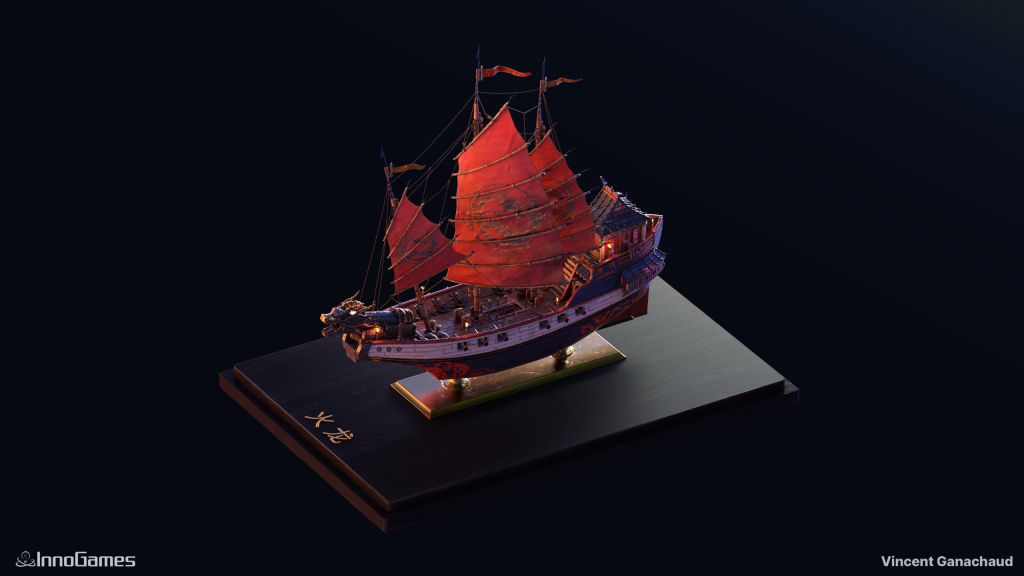
That wraps up our interview! We thank Vincent for his answers and hope you found this peek behind the scenes both informative and enjoyable.! Until we meet again for another blog article, make sure to pay the Polynesian Settlement a visit in Forge of Empires! See you in the next one!
– Vivien Redmann –
Trainee Community Management, InnoGames

